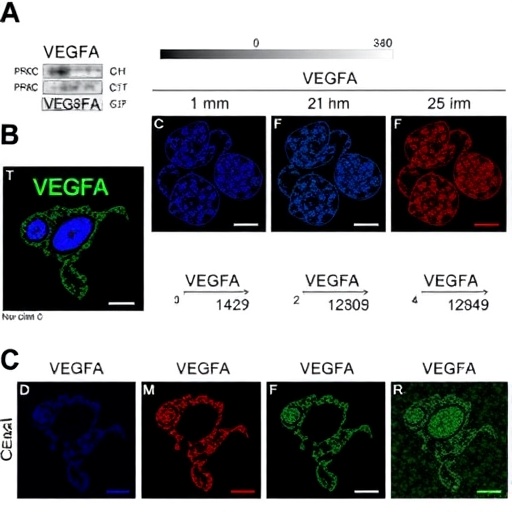
In a groundbreaking preclinical study published in the September 2025 issue of European Neuropsychopharmacology, researchers have uncovered compelling evidence that Semaglutide, a medication originally developed for diabetes and weight loss, markedly reduces cocaine-seeking behavior in rat models. This discovery opens an intriguing new avenue for addressing cocaine dependency, a condition notoriously resistant to pharmacological interventions. While these findings remain preliminary, restricted to animal models, they mark a significant stride in addiction research and underscore the urgent need for clinical trials in humans.
Cocaine remains one of the most widely abused illicit substances in Europe and beyond. According to the European Drug Agency, approximately 2.7 million young adults aged between 15 and 34 engage in regular cocaine use, constituting roughly 2.5% of this demographic. In particular, the United Kingdom records some of the highest rates globally—nearly 2.7% of adults reportedly consume cocaine. Despite decades of research, cocaine dependency currently lacks any approved pharmacological treatment, relying instead on psychosocial interventions that often yield limited efficacy.
The collaborative study, conducted by scientists from the University of Gothenburg in Sweden and the University of Pennsylvania, revolved around an innovative experimental paradigm involving male rats. These animals were trained to self-administer cocaine via lever presses that delivered directly-injected doses. The critical experimental manipulation involved administering Semaglutide to a subset of these rats before sessions in which they could access cocaine. This allowed the team to meticulously assess Semaglutide’s effect on both the motivation to obtain cocaine and the actual consumption of the drug.
Lead researcher Professor Elisabet Jerlhag explained the significance of their findings: Semaglutide treatment resulted in a 26% reduction in cocaine self-administration compared to control animals. This effect parallels previous observations from Jerlhag’s group and others that GLP-1 receptor agonists—such as Semaglutide—can mitigate alcohol consumption and craving in rodents and human subjects alike. The current data represent the first demonstration of Semaglutide’s potential utility in modifying cocaine-related behaviors, suggesting a shared neuropharmacological mechanism across different addictive substances.
More strikingly, the study revealed a pronounced decline in cocaine-seeking behavior following a period of enforced abstinence. Rats pretreated with Semaglutide exhibited a 62% reduction in pursuits of cocaine-associated stimuli, alongside a 52% decrease in the motivation to exert effort to obtain the drug. These metrics—measuring both the desire and the reinforcing properties of cocaine—are critical indicators of the drug’s addictive potential, and their attenuation by Semaglutide points to a powerful modulatory influence on the neural pathways implicated in addiction.
Nonetheless, Professor Jerlhag emphasized the inherent limitations of animal research and cautioned against premature extrapolations to human populations. “While these results are promising,” she noted, “we require larger-scale studies and subsequent clinical trials in humans before endorsing Semaglutide as a treatment for cocaine dependency.” The complexities of human addiction, encompassing genetic, environmental, and psychosocial variables, demand rigorous testing to validate the translatability of these preclinical outcomes.
Semaglutide functions as a glucagon-like peptide-1 (GLP-1) receptor agonist. This class of drugs has revolutionized metabolic medicine by significantly improving glycemic control and promoting weight loss in patients with type 2 diabetes and obesity. Intriguingly, emerging evidence indicates that GLP-1 receptor agonists exert neuromodulatory effects beyond metabolic regulation, influencing reward circuits within the brain. These effects likely underlie the observed reductions in addictive behaviors across substances such as alcohol and, now, cocaine.
In an independent commentary, Professor Christian Hendershot of the University of Southern California’s Institute for Addiction praised the study’s methodological rigor and clinical relevance. As the lead author of the first randomized, placebo-controlled clinical trial assessing Semaglutide’s impact on alcohol craving, Hendershot highlighted the broader implications of GLP-1 receptor agonists for stimulant use disorders. “Given the challenges in identifying effective medications for stimulant addiction, these findings should catalyze human clinical trials exploring GLP-1 agonists’ therapeutic potential,” he asserted.
The neurobiological mechanisms through which Semaglutide mitigates cocaine use are hypothesized to involve attenuation of dopamine transmission within the nucleus accumbens, a central brain region involved in reward processing. Cocaine’s addictive properties stem largely from its capacity to elevate dopamine levels, creating intense reinforcement and craving. By suppressing cocaine-induced dopamine surges, Semaglutide may blunt the rewarding effects that drive compulsive drug-seeking.
Moreover, the generalizability of Semaglutide’s effects across different substances suggests that GLP-1 signaling represents a promising target for broader addiction treatments. As the obesity and diabetes epidemics have propelled widespread clinical adoption of GLP-1 receptor agonists, their safety profiles and pharmacokinetics are becoming well-characterized, potentially facilitating faster translational research into addiction medicine.
This pioneering research underscores a paradigm shift where metabolic therapeutics intersect with neuropsychiatric applications. Understanding how agents like Semaglutide modulate neural circuits involved in motivation and reward not only unveils novel treatment avenues for cocaine dependency but also enriches our grasp of the complex interplay between metabolic and psychiatric health.
While the path from rodent models to human clinical application is fraught with scientific and regulatory hurdles, the absence of effective pharmacotherapies for cocaine dependency elevates the significance of these findings. Future investigations will need to determine optimal dosing, safety, and efficacy in diverse human populations, alongside exploring potential synergistic effects with behavioral interventions.
In sum, the discovery that a diabetes drug can attenuate cocaine-seeking behavior invigorates the prospect of innovative pharmacological strategies to combat stimulant addiction. By leveraging agents already approved for other indications, the medical community may soon wield powerful new tools to address one of the most intractable challenges in public health.
Subject of Research: Animals
Article Title: Semaglutide suppresses cocaine taking, seeking, and cocaine-evoked dopamine levels in the nucleus accumbens
News Publication Date: 4-Sep-2025
References:
Cajsa Aranäs, Antonia Caffrey, Christian E. Edvardsson, Heath D. Schmidt, Elisabet Jerlhag. Semaglutide suppresses cocaine taking, seeking, and cocaine-evoked dopamine levels in the nucleus accumbens. European Neuropsychopharmacology, Volume 98, September 2025, Pages 1-10. DOI: 10.1016/j.euroneuro.2025.07.001
Keywords: Psychiatric disorders, Illicit drugs, Public health, Medical treatments, Drug therapy, Drug studies, Pharmaceuticals
Tags: addressing resistance in cocaine treatmentclinical trials for substance use disorderscocaine abuse statistics in Europecocaine-seeking behavior in ratscollaborative addiction research efforts.European Neuropsychopharmacology researchimplications of Semaglutide for human addictioninnovative addiction research methodologiespharmacological treatment for cocaine dependencypreclinical studies on addictionSemaglutide for cocaine addictionweight-loss drug effects on addiction




